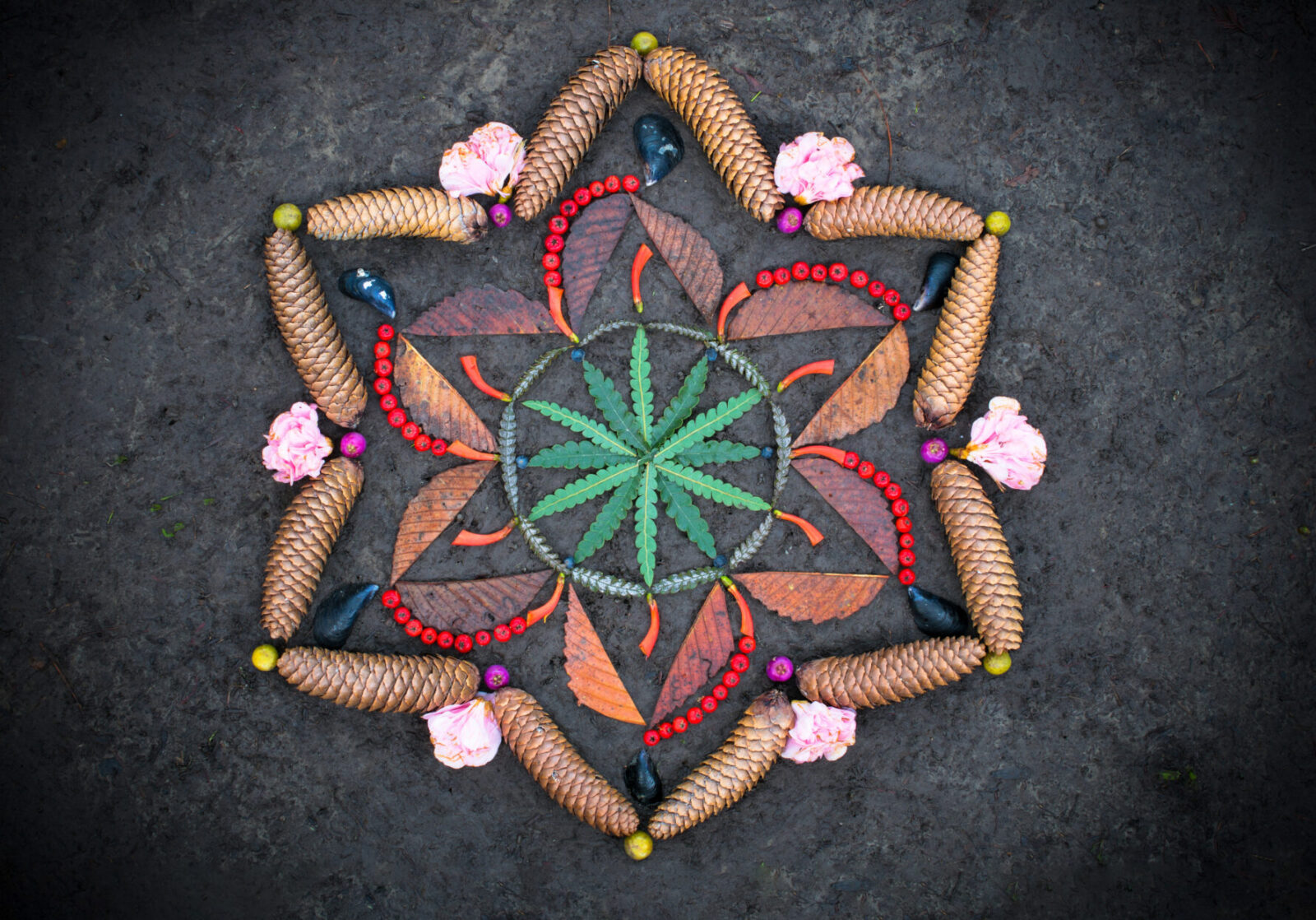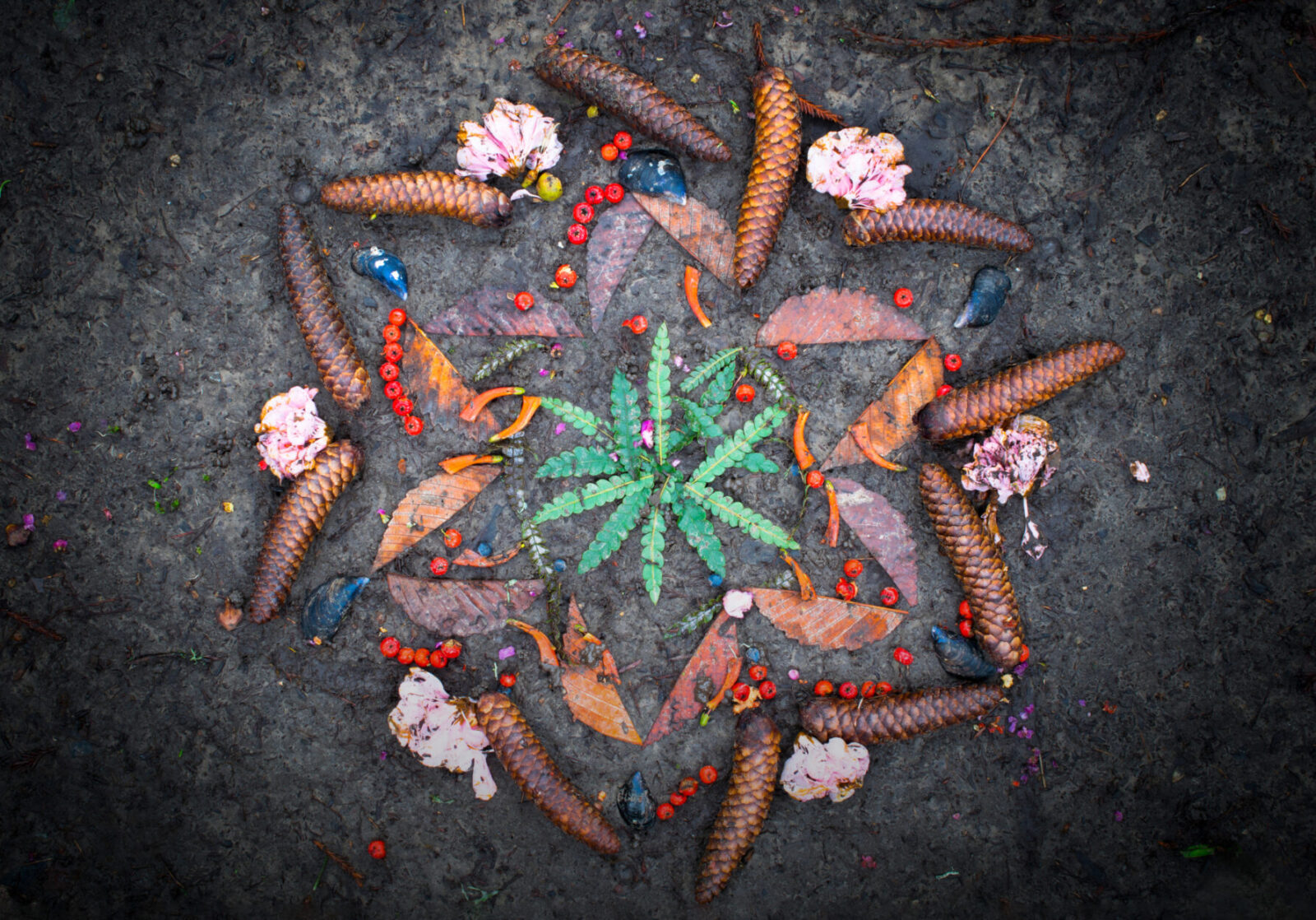
Image courtesy of Day Schildkret

Image courtesy of Day Schildkret

Image courtesy of Day Schildkret

Image courtesy of Day Schildkret
While there are an abundance of sacred and secular rituals for facing what is considered a natural or “good” death, few rituals respond to lives touched by trauma, violence, or stigma. And while most cultures and faith traditions provide meditations and prayers for the loss of human life, a gap exists for rituals and ceremonies that address environmental loss.
Reimagine End of Life—a national nonprofit organization that aims to transform individual and collective experiences around death, dying, and living through community-driven festivals sparking creativity, connection, and conversation—solicited rituals to address some of these gaps. They are inspired by performances and ceremonies by artists and spiritual leaders from Reimagine festivals in New York and San Francisco.
We hope these rituals serve as a tool kit with step-by-step instructions toward healing, resiliency, and action.
By Aminta Kilawan-Narine
Sadhana: Coalition of Progressive Hindus invites participants to reflect on the water as Goddess and Mother, ever-plentiful with Her nourishment, ever nurturing with Her resourcefulness. We call on those who perform this ritual to “make waves” for gender justice, acknowledging the irony that water is worshipped as Supreme Goddess. Hindus worship the water as Mother Ganga, yet we harm Her with pollution. This runs counter to the Hindu principle of ahimsa (non-violence).

By Rabbi Sydney Mintz
In Judaism there is no traditional ritual for miscarriage, stillborn, or infant death, despite the fact that one quarter of all pregnancies result in miscarriage and one in three women experience one. It is a profound loss that impacts women, men, and families, yet it is a silent loss for many who must contend with this personal tragedy in isolation.
Judaism has a rich tradition of mourning rituals, but perhaps because miscarriage has remained primarily hidden and is experienced mostly by women in private, the time has come to create a new ritual. A new space for remembering such losses, the Memory Garden, will also soon open in the San Francisco Bay Area.
This ceremony is inspired by the ritual of Tashlich, which occurs on Rosh Hashanah, the Jewish New Year. We symbolically release bread crumbs into a body of water to let go of any painful emotional burdens and open up a new space for life.

By Day Schildkret and Jessica Neafsey
The world as we have known and loved it is changing fast. Industrialization and overpopulation have contributed to a global climate crisis that renders within our hearts a new kind of anticipatory grief.
To move forward amid growing fears we need new means to process this grief and trauma as it arises, both privately and collectively. Impermanent Earth altars poignantly validate loss through their ephemeral nature and boldly welcome grief into the public realm. Creating such altars may offer an increased sense of unity in divisive times by reflecting our shared fears and vulnerability.
This Earth altar ritual can be implemented in parks or civic spaces. It enables people to make personal and collective ecological grief visible, tangible, and more deeply felt, so we may move through it with our hearts not paralyzed with fear but rather broken open with love for our world.

By Elizabeth Velazquez
This remembrance ritual addresses injustices and acknowledges the human suffering caused by unjust conditions. At the 2018 Reimagine festival, I performed this ritual at Washington Square Park in memory of Rose Butler, an enslaved young black woman. She was accused of stealing and afterward resisted injustice by setting fire to her enslavers’ home.
In 1819 she was hanged at the gallows that once stood inside Washington Square Park. This site, like other public parks in New York City, served as a potter’s field—a mass grave for the homeless, poor, forgotten, and neglected. To raise property values during the early 1800s, Mayor Philip Hone led a successful campaign to cover the burial grounds without removing the bodies. Such histories are not evident anywhere around the park and stand out as an injustice further emphasized by the monumental Washington Square Arch.


Aminta Kilawan-Narine is an attorney, community organizer and cofounder of Sadhana: Coalition of Progressive Hindus. In 2019 she facilitated a series of workshops on feminism in the Hindu faith, partnering with Sadhana and fellow community organization Jahajee Sisters. Kilawan-Narine is also a coordinator of Project Prithvi, Sadhana’s green initiative to promote environmentally friendly worship practices at Jamaica Bay Wildlife Sanctuary in Queens. In 2018 she co-organized a Project Prithvi cleanup in conjunction with the Reimagine festival.

Rabbi Sydney Mintz was ordained by the Hebrew Union College-Jewish Institute of Religion. She has served as rabbi at Congregation Emanu-El in San Francisco for twenty-two years and is on the board of Bend the Arc: A Jewish Justice Partnership. Rabbi Mintz was selected as a Hartman Rabbinic Fellow in 2003 by the Shalom Hartman Center and has led Team Emanu-El in the AIDS/LifeCycle. She currently serves on the 360° Advisory Council of Reimagine.

Jessica Neafsey is a licensed landscape architect and environmental artist in Carmel, California. Her creative work is driven by the simple mission to expand our sense of kinship with nature and all life, and she enjoys rebuilding joyful bridges between nature and culture.

Day Schildkret is internationally known for Morning Altars and has inspired tens of thousands of people of all ages across the globe to be awed with impermanent Earth art. He is the author of Morning Altars: A 7-Step Practice to Nourish Your Spirit through Nature, Art, and Ritual and has been featured in BuzzFeed, Vice, and Spirituality & Health Magazine. During the 2018 Reimagine festival, he led an impermanent Earth art installation at the National September 11 Memorial.

Elizabeth Velazquez creates mixed-media sculptural works, installations, and rituals. She is one of the founding members of Southeast Queens Artist Alliance (SEQAA), a grassroots collective of artists creating socially engaged projects in southeast Queens. In 2019 Velazquez traveled to Jerusalem as part of The apexart Fellowship. In 2020 she was a resident artist at Wave Hill for the Winter Workspace Program. Velazquez lives in Queens, New York.
Get the latest news and stories from the Rubin, plus occasional information on how to support our work.